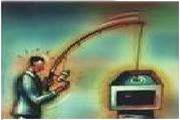
“Phishers are getting better all the time at optimising the relevancy factor of their attacks - analysing human behaviors and interposing themselves credibly at the right moment to maximise their chances of successful fraud,” said Klein.
In the November to December gift-giving season, individuals who normally make only a few credit card purchases a month are suddenly doing multiple transactions, he said.
Klein believes, “Not only was there a large volume, but people use different financials instruments and it’s just not easy to remember everything that they’ve bought, and how they paid for it. When people are uncertain they are vulnerable to trickery, which cyber criminals are counting on.”
To prepare for the attacks, scammers use November and December to gather email addresses of potential victims in January. While traditional spam has increased slightly in Q4 of 2007, the real increase is in Directory Harvest
Attacks used to discover email addresses – these attacks have nearly doubled from Q3 to Q4 of 2007.
With the tremendous increase in Directory Harvest Attacks, the volume of junk email – spam, virus, fraud, directory harvest, and denial of service email – are now at a higher level than ever, running at almost 97 percent of all email traffic according to SonicWALL statistics.



_(22).jpg&h=140&w=231&c=1&s=0)





_(26).jpg&w=100&c=1&s=0)

 iTnews Executive Retreat - Security Leaders Edition
iTnews Executive Retreat - Security Leaders Edition












_(1).jpg&h=140&w=231&c=1&s=0)



